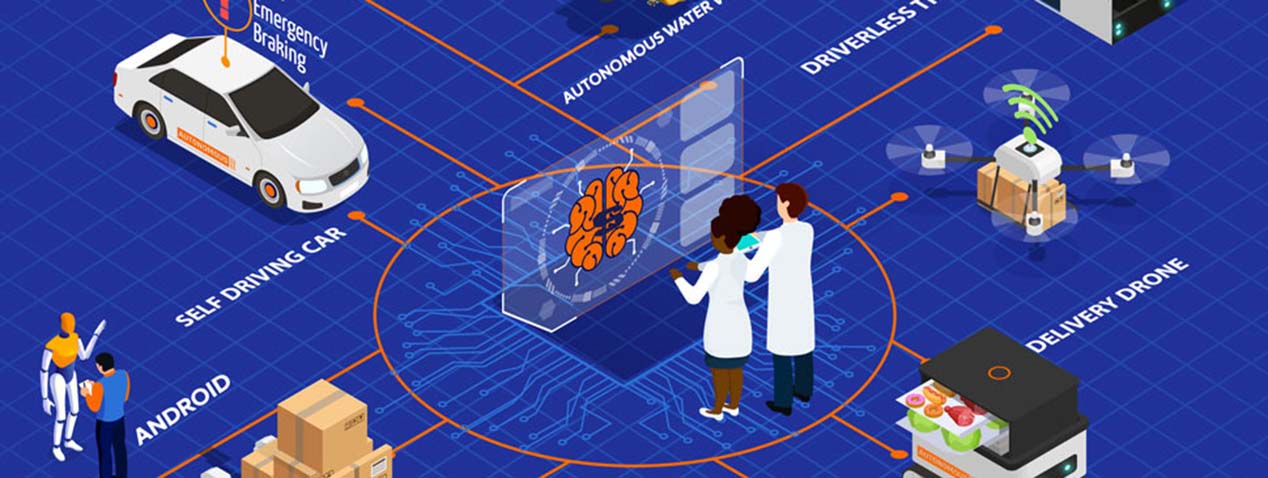What is an Autonomous System (AS)?
An Autonomous System is a group of IP addresses and networked routers that are controlled by a single organization and use a unified, consistent routing policy. Essentially, an AS operates as an independent unit within the larger Internet, managing the traffic that enters and exits its boundaries.
For example, a large Internet Service Provider (ISP), a university, or a corporation may operate its own AS to manage the traffic for its network. Within an AS, all routing is managed autonomously and decisions are made based on the organization’s internal routing policies.

Types of Autonomous Systems
Autonomous Systems can be classified into several types based on their role and relationship with other ASes:
- Single-Homed AS: Connects to only one other AS, which limits redundancy and may lead to downtime if the connection fails. Smaller networks often use this setup for simplicity.
- Multi-Homed AS: Connects to multiple ASes but doesn’t allow traffic to flow through it to other ASes. This setup offers greater redundancy and reliability.
- Transit AS: Provides connectivity for other ASes. Transit ASes allow traffic from one AS to pass through them to reach another AS, forming the backbone of the Internet.
- Stub AS: Has a single connection to one other AS and doesn’t allow transit traffic. It’s typically used by organizations that do not require connections to multiple networks.
Each AS type has its distinct role in the larger Internet architecture, helping to provide robustness and redundancy in global data routing.
Why Autonomous Systems Are Important
Autonomous Systems are the backbone of the Internet for several reasons:
- Traffic Management: ASes allow organizations to manage their network traffic independently, optimizing performance based on their specific needs.
- Scalability: Dividing the Internet into ASes helps in scaling the network by breaking down the massive number of routes into manageable subsets.
- Fault Tolerance and Redundancy: ASes provide redundancy by connecting through multiple pathways. If one AS fails or loses connectivity, data can be rerouted through other ASes.
- Security and Control: ASes enable organizations to implement security measures and control policies for incoming and outgoing traffic, ensuring the integrity of their network.

How Autonomous Systems Work
Autonomous Systems work by organizing routing through a mix of internal and external protocols. They help manage how data packets travel across different networks within the AS and between other ASes.
- Internal Routing (Intra-AS Routing): Within an AS, the network uses Interior Gateway Protocols (IGP) such as OSPF (Open Shortest Path First) or RIP (Routing Information Protocol) to route traffic between internal routers.
- External Routing (Inter-AS Routing): For communication with other ASes, Exterior Gateway Protocols (EGP) are used. The most widely used EGP is the Border Gateway Protocol (BGP), which determines the best path for data across multiple ASes based on policies, metrics, and network paths.
Autonomous System Numbers (ASN)
Each Autonomous System is assigned a unique Autonomous System Number (ASN) by the Internet Assigned Numbers Authority (IANA). The ASN is crucial for identifying ASes on the Internet and facilitating efficient data routing.
There are two types of ASNs:
- 16-bit ASNs: Traditionally, ASNs were 16-bit, providing around 65,536 unique identifiers.
- 32-bit ASNs: With Internet growth, IANA introduced 32-bit ASNs to expand the pool to over 4 billion possible ASNs.
Each ASN allows the AS to appear as a single entity on the Internet, streamlining interactions with other ASes.
Routing Protocols and Overall Network Reliability
Almost every autonomous system in networking use different routing protocols to manage how data moves through networks. Internally, they rely on Interior Gateway Protocols (IGPs), such as OSPF (Open Shortest Path First) or RIP (Routing Information Protocol), which control routing within the AS. Externally, ASes use Exterior Gateway Protocols (EGPs), with the most common being Border Gateway Protocol (BGP). BGP is crucial for routing between ASes, as it manages the paths that data takes across the Internet, helping ensure that traffic moves through the most efficient or preferred routes.
Autonomous System Architecture
The architecture of an AS consists of routers and IP networks, with specific policies governing how data is managed. The AS architecture includes the following components:
- Edge Routers: Positioned at the boundaries of an AS, edge routers communicate with routers in other ASes, handling data transfer based on BGP policies.
- Core Routers: These are high-speed routers that handle internal traffic within the AS, ensuring efficient data movement between network segments.
- Administrative Policies: Each AS follows routing policies to prioritize certain paths, restrict access, or comply with specific traffic-handling guidelines. These policies can be tailored to meet the AS’s objectives, such as reducing costs or improving data security.
Real-World Applications of Autonomous Systems
Autonomous Systems play a central role in various real-world applications, such as:
- Internet Service Providers (ISPs): ISPs use ASes to manage their customer traffic, ensuring reliable and efficient service.
- Enterprise Networks: Large corporations with multiple branches often create ASes to manage their internal network traffic, optimizing performance across locations.
- Cloud Services: Cloud providers operate ASes to control data routing within their network and optimize communication with external networks.
- Data Centers: Data centers utilize ASes to streamline data flow within their networks and efficiently connect with external ASes, providing scalability and reliability for customers.
Conclusion
An Autonomous System is a critical building block in the global Internet infrastructure, enabling efficient data routing and network management. Through a combination of unique ASNs, advanced routing protocols, and tailored policies, ASes allow organizations and service providers to manage traffic autonomously and securely. With their vital role in ensuring scalability, redundancy, and control, Autonomous Systems are essential for maintaining a reliable and efficient Internet. Whether you’re an ISP, an enterprise, or a cloud provider, understanding Autonomous Systems is key to optimizing network performance and achieving seamless connectivity in today’s interconnected world.





































